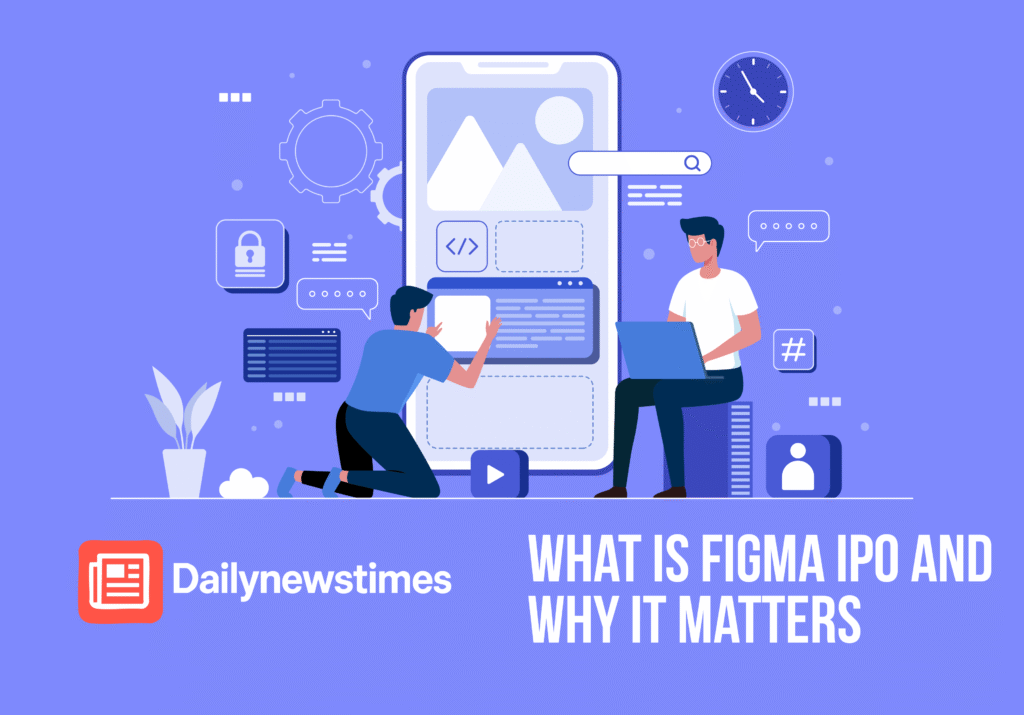The return of big tech IPOs?
Let’s be honest, the IPO scene’s been dry lately. But in 2025, things seem to be heating back up. With companies like Chime, Instacart, and now Figma filing, Reuters notes that Figma might signal the comeback of tech IPOs. Investors are craving something fresh, and Figma’s got that vibe.
Profitability (finally!) and fast growth
Figma posted $749 million in revenue in 2024, up from $504 million in 2023. Even more impressive? They’re profitable now. In Q1 2025, the company generated $44.9 million in net income, according to Barron’s. Not bad for a startup once running off VC fumes.
The breakup with Adobe actually helped?
A lotta folks thought the Adobe deal falling through would hurt Figma’s future. But it turns out, walking away from that $20 billion acquisition—blocked by the UK and EU—might’ve been a blessing. They got a $1 billion breakup fee, and retained full control over their roadmap. More on that from Fortune.
Bigger product plans, more AI, and even slides?
Figma isn’t just about design files anymore. They’ve launched FigJam, AI-powered features, and even a new Slides product that competes with Google Slides and PowerPoint. They’re targeting not just designers, but entire cross-functional teams now—devs, PMs, marketers, all of ‘em.
The cons—you gotta know the risks too
Figma looks shiny, sure, but let’s not ignore the challenges.
- Crypto volatility: Their Bitcoin holdings could backfire if crypto tanks hard. It’s not every day a design SaaS company also dabbles in BTC.
- Tough competition: Adobe XD, Canva, and Notion are all beefing up their design offerings too.
- Economic slowdown: If enterprise customers start trimming budgets, Figma could see slower growth.
- More regulation: Anti-trust laws and watchdogs are still watching big tech moves closely, especially after their Adobe ordeal. As Constellation Research points out, any M&A talk in the future might be complicated.
Extended Pros and Cons of figma ipo
✔️ Pros
- Profitable growth: Unlike most tech startups, Figma is already in the black—no more burning cash, hoping for future gains.
- Strong customer loyalty: Product teams love it, and their churn rate is super low. Once folks use it, they usually don’t leave.
- Large market opportunity: With hybrid work still a thing, more teams are looking for real-time, web-based collaboration tools.
- Clear product roadmap: With tools like FigJam and Slides, they’re targeting more than just designers now—huge potential upside.
- Great IPO timing: The market seems to be recovering, and there’s investor appetite again for growth-stage tech.
⚠️ Cons
- Exposure to Bitcoin adds risk: BTC prices can swing wildly, which might scare off more traditional investors.
- High valuation: At $16 billion, it ain’t cheap. Some investors might hesitate if growth slows.
- Crowded market: Competitors are launching new features fast, and switching costs aren’t super high for design tools.
- Post-IPO pressure: Once public, Figma will need to show consistent results quarter after quarter, and Wall Street can be unforgiving.
- Geopolitical tensions and regulation: If more regulators around the world start scrutinizing U.S. tech firms again, Figma’s global expansion plans might hit delays.
FAQs about figma ipo
Q: What’s the ticker for Figma?
A: The company plans to trade under the ticker FIG on the New York Stock Exchange.
Q: Who can buy figma stock?
A: Anyone with a brokerage account can buy shares once it’s listed. Just watch that IPO price.
Q: Why did the Adobe deal fail?
A: It got blocked by UK and EU regulators over anti-competitive concerns, as The Verge reported.
Q: When is Figma going public?
A: Trading is expected to begin in early August 2025, per Financial Times.
Final thoughts: Should you care about figma ipo?
If you’re into tech stocks, or if you’re part of a product or design team, then yeah—you should care. The figma ipo represents more than just another software company going public. It’s about independence, innovation, and the next chapter in collaborative tech.
Sure, there’s risks. But also, there’s opportunity. Whether you invest or just watch from the sidelines, Figma’s next move could reshape more than just your design files.


